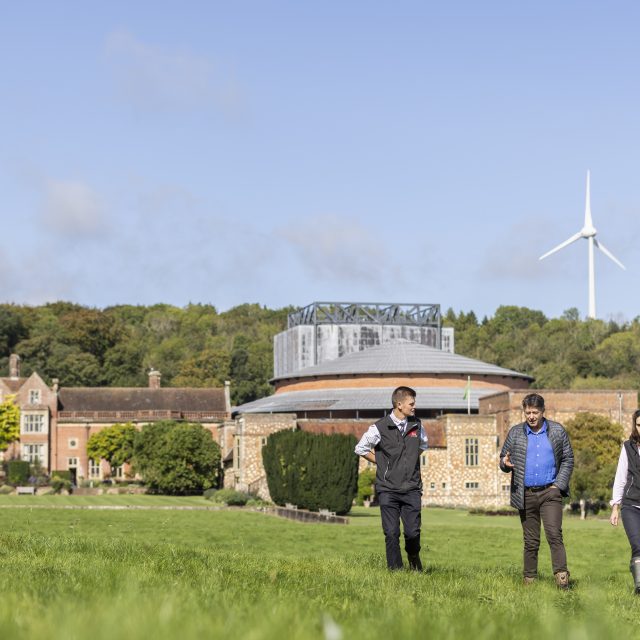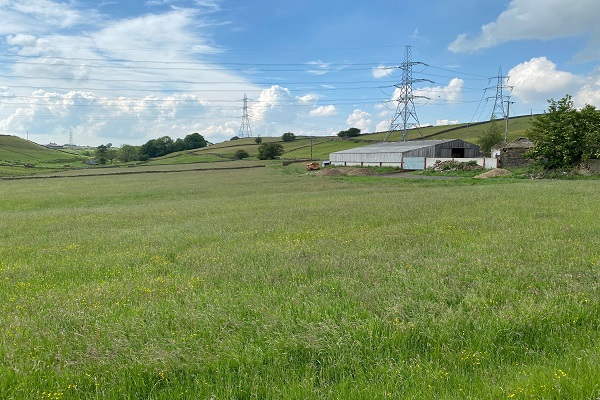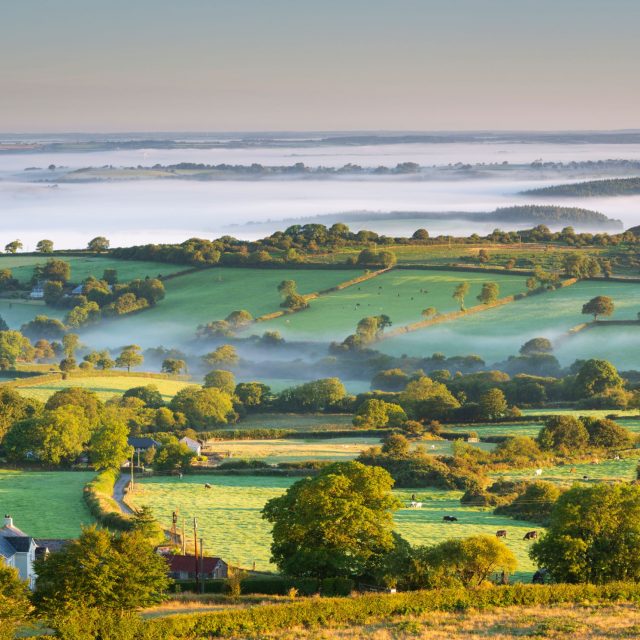How could AI change life in the rural sector?
Artificial Intelligence (AI) has the potential to revolutionise the way farms and estates are run, but do we need a society-wide debate about what, ultimately, is wanted from such technology?
A decade has passed since machinery manufacturer John Deere released a Farm Forward’ video, offering a vision of how artificial intelligence (AI) and machine learning could change agriculture.
This groundbreaking video, widely shared on YouTube at the time, was the first to bring the concept of an autonomous farm to life. It featured a farmer managing key tasks remotely from his home in real-time using an interactive, all-singing, all-dancing console.
At the time it seemed a futuristic concept, closer to science fiction than the estate or farm office. But AI language tools such as ChatGPT and Bard, which use machine learning and natural language processing to generate human-like responses, are now freely available online. Meanwhile, millions of pounds of public and private investment are pouring into the development of AI technologies for the land-based sectors.
The potential for AI technology to benefit farming, forestry and wider estate management is fast becoming a reality and it looks as if there could be very real benefits for land managers in terms of greater automation, improved efficiency, enhanced decision-making and more sustainable practices,’ says Jason Beedell, Rural Research Director for Strutt & Parker. While AI systems have not yet hit the mainstream, this type of smart technology could really help the rural sector to stay competitive, while hitting net-zero targets, reversing biodiversity loss and tackling water pollution.’
Improved forecasts
Some of the most advanced examples of AI used currently in UK food production are in the high-value crops sector. Two of the UK’s leading soft fruit growers have been trialling a new system called FruitCast, developed to more precisely forecast growth development and yields. It is claimed this could be a game changer’, enabling businesses to plan labour and manage market supply much more accurately, in a world where margins are tight and labour shortages are an ongoing problem.
On the arable side, the focus is on the use of AI systems to take precision farming techniques to the next level. Using data collected from soil sensors, weather stations and satellite imagery, farmers are able to make more informed decisions about crop management and use automated equipment to apply inputs more efficiently.
Many dairy farmers have already embraced robotic milking technology and now the focus is on the potential of AI to improve animal health and welfare. Harper Adams University has been collaborating with the University of Nottingham and Peacock Technology to use a combination of new technologies to automatically monitor cow health in commercial dairies.
Rather than having individual sensors on cows to detect when they are in oestrus or to monitor their health, the animals are being monitored by cameras which feed into an AI network,’ says Harper Adams Professor of Applied Animal Behaviour, Mark Rutter.
AI learns to recognise each individual animal and its behaviours such as eating and the cow’s milking efficiency. With this information, the AI can then analyse the data and warn of possible signs of illness.
According to Jason, there should also be applications for AI and computer vision which involves computers extracting data from photographs and images to help balance competing demands for land. This could play a part in combatting climate change and reversing biodiversity declines.
AI could help identify and map which land is most suitable for agriculture, forestry, housing, conservation or other uses,’ he explains. ‘If we layer on smart environmental monitoring models to improve our understanding of ecosystem dynamics, we could build a picture of what drives biodiversity losses, opening the door on more targeted and effective conservation efforts.’
Research teams at the University of Loughborough, Leicester and Bristol are already working on a two-year project, funded by £2.5m from UK Research and Innovation, to develop a self-learning AI digital twin’ of the UK based on satellite information, field instrumentation and multiple data sources. A digital twin is a virtual representation of a real-life object or system, which can be used to simulate different scenarios based on real-world data. The goal is to improve understanding of greenhouse gas emissions from different land uses.
Potential downsides
According to Professor David Rose, from the Royal Agricultural University, AI offers great potential in terms of producing more food with a smaller environmental impact and improved animal welfare, but more attention should be paid to possible downsides.
Very few people talk about the potential bumps in the road, or at least what some of the challenges might be. Yet we need these conversations to work out how to overcome them,’ says David, who runs the Change in Agriculture research group looking at farm innovation past, present and future.
One of his primary concerns is that some farmers could be left behind as a result of uneven adoption of smart technologies. We must invest in supporting the farming community to acquire the necessary skills to use AI tools and interpret the data they produce, and to improve digital connectivity in rural areas so they can get such tools to work in the first place.’
Identity crisis?
Another consideration is what impact greater digitisation might have on people’s sense of self and job satisfaction if their role becomes less hands-on a phenomenon dubbed digital agriculture killjoy’ by US researcher Michael Carolan.
For farmers, part of the reason they enjoy their job is being on the land and with their livestock and there is a wider concern that sitting in front of a computer may create a disconnect,’ says David.
Other potential negative consequences of AI include questions over the reliability and safety of autonomous systems, how technology companies might use farmers’ data and whether AI systems could end up perpetuating forms of intensive agriculture that are damaging to the environment or that the public don’t like.
Fundamentally, David believes what is required is a discussion about the vision for the UK’s food sector and how AI can help to deliver it. AI could be fantastic for facilitating a different agricultural system, but I don’t think we are having those conversations. We get hung up on whether a tool can do X, Y or Z, rather than how it might help us to transition to a more sustainable agricultural system that farmers and the wider public would both be happy with.’
This article first appeared in the Autumn/Winter edition of Land Business magazine, which can be downloaded in full.






